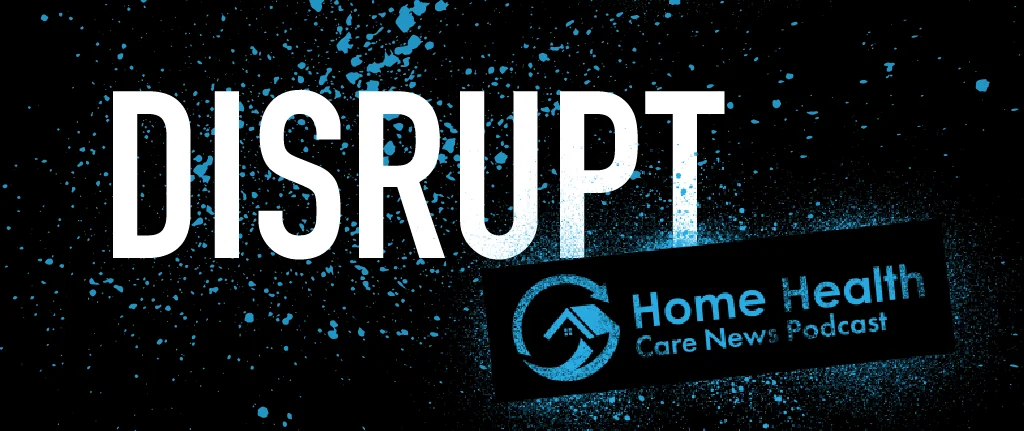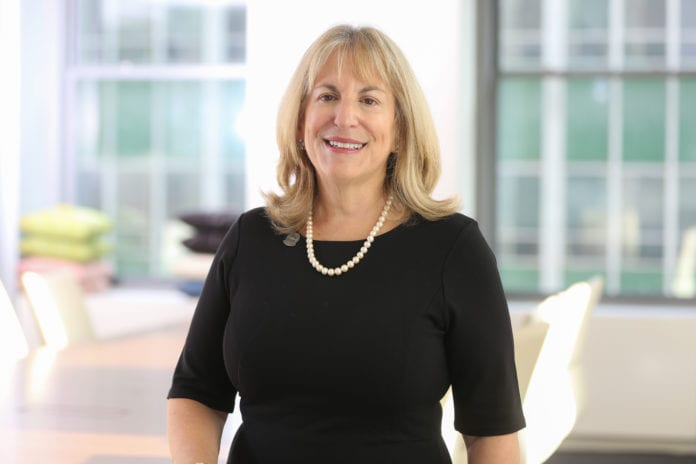One of the oldest nonprofit home- and community-based health care organizations in the country is counting on innovative technology and reimbursement models to keep it on the cutting edge in the years to come.
As such, preparing for the Patient-Driven Groupings Model (PDGM), pursuing risk-based relationships and exploring predictive analytics are top of mind for the Visiting Nurse Service of New York (VNSNY).
That’s according to Andria Castellanos, executive vice president and chief of provider services for VNSNY. Castellanos discussed those topics while recently sitting down with HHCN for an episode of Disrupt.
Subscribe to Disrupt via Apple Podcasts, Google Play Music, SoundCloud or your favorite podcast app.
During her conversation with HHCN, Castellanos reflected on the transition to her current position — and the direction in which she’s helping CEO Marki Flannery lead the company.
Below are some highlights from HHCN’s conversation with Castellanos, edited for length and clarity.
HHCN: First of all, I want to follow up on some comments Dan Savitt, executive vice president and CFO of VNSNY, made last month at HHCN’s Capital + Strategy Forum in Washington, D.C. He said managed care is sort of a headwind for VNSNY. Can you elaborate on that and talk about the challenges and opportunities it presents for your organization?
Castellanos: The penetration of Medicare managed care in New York is very high compared to many parts of the country, but the rest of the country is going to experience more and more penetration as time goes on.
At first, when Medicare managed care entered the market as a product, home health care typically negotiated a visit rate.
As the years went by, that rate didn’t keep up with our costs, so over time, we were able to negotiate some case rates with managed care companies, and then eventually we were able to negotiate some value-based arrangements associated with our ability to deliver on quality and cost.
The challenge today is to work with all of our managed care partners to turn our inadequate visit rates into a case rate with shared risk. That’s really the challenge.
We have to move from a visit mentality to a case-rate mentality to a shared-risk mentality.
We’re on this continuum trying to work closely with our managed care partners to shift the mindset of how we can be partners with them and how valuable our services can be from a quality and a cost standpoint.
Why is changing that mindset so important?
Changing that mindset is important from everybody’s perspective.
It’s important from a patient’s perspective: If we improve quality, we can improve the care they’re receiving.
It’s important to hospitals: If we can help to decrease hospital readmissions, if we can help to decrease emergency room visits, if we can help to improve on infection rates, hospitals will have better CMS scores and ratings. Their patients’ care quality will improve as well.
It’s important to insurance companies: Their costs will go down and that’s what they’re looking for.
And it’s good for us because, right now, the rate we’re getting is unsustainable.
We have to shift the paradigm of how we get paid in the market because the penetration of managed care is so high in New York.
In that same headwinds vein, how is VNSNY preparing for PDGM?
We — along with all the home [health] care companies across the entire country — are focusing on this effort.
We have a dedicated work stream associated with PDGM. That work stream consists of a series of workers to address our concerns about PDGM — or possible concerns.
First, we’re educating all of our teams, including our field staff, as to what this new paradigm [means]. Our analytics and operations teams have been analyzing our data and looking at simulations of how we’re going to perform under PDGM.
Our teams are determining areas where we need to improve and areas of opportunity. And we’re assessing the competencies, strengths and weaknesses of our teams that are going to really be able to impact PDGM.
For example, we’re looking very closely at our coders and our coding teams to see where they fit into the operations. Do they fit in on the back end or on the front-end? And do they have the right competencies to be successful under this new paradigm?
We’re also working with our electronic medical record (EMR) vendor to understand the functionality that they’re going to provide to us to help us manage PDGM.
Our finance teams are looking and working hard to understand and plan for any cash-flow implications associated with this model. It’s important for us to understand the implications of going from a 60-day payment unit to a 30-day payment unit.
Understanding the new LUPA — low utilization payment adjustment — criteria is going to be very important. We’re working on that.
And, of course, we continue to work with our advocacy groups to influence the final legislation associated with the rollout.
Do you expect PDGM to change how you operate?
Under PDGM, we need to understand: What information do we need? Does it need to be different information?
It’s much more important to get all the diagnoses up-front. We want to make sure we get all the clinical information we need to get to optimize our reimbursement because if we don’t get the right information up-front, we could be missing out on appropriate reimbursement based on what we do.
I don’t anticipate that we’re going to be taking care of patients differently, but the information to support what we’re doing is likely to be a little bit different than what we’ve done in the past.
Let’s talk about fair scheduling. This is something that’s been proposed in New York in the past. Generally, what are your thoughts on this trend and how it will affect the home-based care industry?
We at VNSNY think that this would be very detrimental to the home care industry. The home care industry is often urgent and emergent in nature, and it’s very difficult for us to have a predictable schedule.
Patients are admitted or readmitted to hospitals with hours of notice — or minutes.
It is impossible for the home care industry to schedule workers two weeks in advance … with great accuracy.
If this legislation were to pass in our state, which it did not last year, we think this would be very, very detrimental to the home care industry.
It’s definitely an issue to keep an eye on. Looking forward, what does the future hold for VNSNY, whether it’s goals or priorities?
I think our future is very, very bright.
In the future, I think we will take a more holistic view of our patients. We do that now, but I think it’s even going to get greater.
The integration and management of both the medical and mental health will be very important in assessing and understanding the social determinants of health.
Understanding a patient’s economic stability, the neighborhood they come from, the physical environment they live in, their education, their literacy, their food adequacy, their community and social contacts, and their relationship to the health care system will be really critical for us.
We’ve always been good at this. Our goal is to be great at this because if you don’t understand the wholeness of the patient, you really can’t take care of them in the best way.
In the future we’re going to have more value-based contracts with payers and providers, [and] we’ll take more financial risk with our partners.
[Additionally,] we’re going to be more involved in chronic-care management. Because of the size and strength we have in data analytics, we’ll be able to more accurately identify patients using risk-stratification scores who would benefit from a different level of care.
Our data analytics will help us know this before we see it. In the future, I think we’re going to have to be more proactive with our patients and less reactive with them.
[The future will also] involve more technology solutions that will help us manage our patients better and stay connected to our patients even when we’re not in the home.
I think in the future we’re going to have more creative offerings with our partners like hospitalization at home.
I think there’s going to be a lot of change, shifts and disruption in the future.
On the topic of disruption and touching on the namesake of our podcast, how do you define disruption in the industry, and where does your organization fit in?
Disruption in the industry isn’t like an atomic bomb. It’s not going to happen overnight.
But it will happen over time. I think over the next few years, we’re going to see a lot of change in the industry.
We’re going to use technology that allows us to be in touch with our patients even when we’re not in the home. I love that idea — when we walk out of the home, we can still be connected.
We’re also going to use technology to significantly decrease our operating costs.
For example, we’re introducing technology for all of our home health aides to schedule all of their shifts online and to document their care online. We avoid all of the phone calls and the changes in the schedule and the pieces of paper coming from a home health aide that are then getting put into a system.
The use of data analytics will allow us to know when a patient may benefit from a different and higher level of care. I don’t think we can discount how important using data to drive decisions is going to be in the future.
Shifting our business from a visit rate to a case weight and sharing both upside and downside risk with our providers will potentially be disruptive to the industry as a whole — and hopefully it will be beneficial to the industry as a whole.




